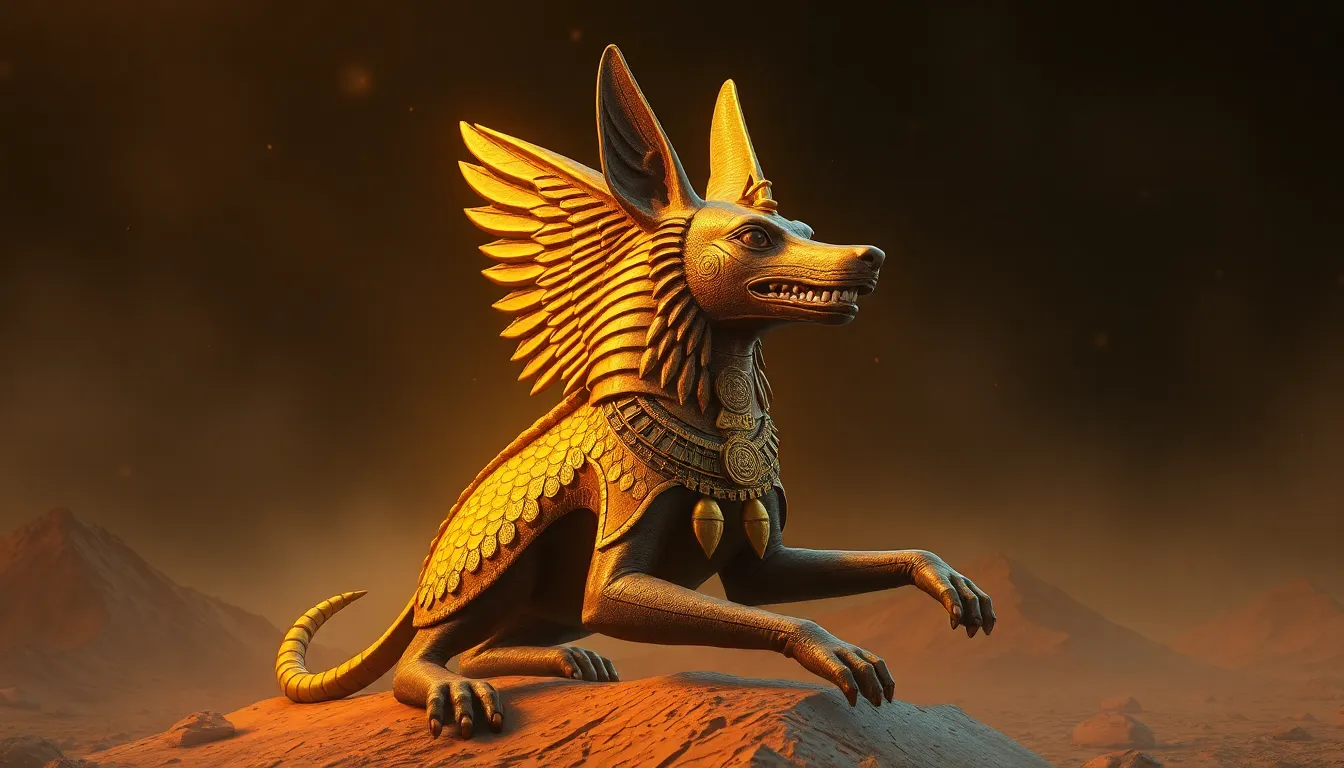The Role of the God Anubis in the Afterlife
I. Introduction
Ancient Egyptian civilization is renowned for its rich tapestry of mythology and beliefs, particularly those surrounding the afterlife. Central to these beliefs is the notion that life does not end with death, but rather transitions into a new realm. The ancient Egyptians held a profound reverence for the afterlife, which was intricately linked to their religious practices and daily lives.
Among the pantheon of deities associated with the afterlife, Anubis stands out as a key figure. Known as the god of embalming and the protector of the dead, Anubis played a vital role in guiding souls through the complexities of the afterlife. This article aims to explore the multifaceted role of Anubis in ancient Egyptian beliefs, rituals, and cultural legacy.
II. Historical Context of Anubis
Anubis, often depicted as a man with the head of a jackal or a fully jackal, is one of the oldest deities of ancient Egypt, with origins that can be traced back to the early dynastic period. Initially, he was revered as the god of the dead, but over time, his role evolved significantly.
- Anubis in ancient Egyptian mythology: Anubis was believed to oversee the embalming process and protect the deceased in their journey to the afterlife.
- Evolution of Anubis’s role over time: As Osiris became more central to resurrection myths, Anubis’s role shifted to that of a guide and protector of the deceased.
- Iconography and representations of Anubis: Anubis is often depicted in art and hieroglyphs as a jackal or a man with a jackal head, symbolizing his connection to death and burial grounds.
III. Anubis as the God of Embalming
One of Anubis’s most critical functions was as the god of embalming. The ancient Egyptians placed immense importance on mummification, believing it was essential for the deceased to achieve a successful afterlife.
- The process of mummification in ancient Egypt: Mummification involved the removal of internal organs, desiccation with natron, and wrapping the body in linen.
- Anubis’s association with the preservation of the dead: As the patron of embalmers, Anubis was invoked during the mummification process to ensure the deceased was preserved for eternity.
- Rituals involving Anubis during embalming: Rituals often included prayers and offerings to Anubis, seeking his blessings for the safe passage of the soul.
IV. The Weighing of the Heart Ceremony
One of the most significant rituals in the journey of the deceased was the Weighing of the Heart ceremony. This ceremony held profound implications for the soul’s fate in the afterlife.
- Description of the ceremony and its significance: In this ceremony, the heart of the deceased was weighed against the feather of Ma’at, the goddess of truth and justice.
- Anubis’s role as the guide and protector during the judgment: Anubis was responsible for conducting the weighing and ensuring the process was fair and impartial.
- Symbolism of the heart and its implications for the afterlife: The heart represented the soul and its deeds in life; a heavy heart indicated a life of wrongdoing, leading to the soul’s devouring by Ammit, the soul-eater.
V. Anubis as a Guide to the Underworld
In addition to his role in embalming and judgment, Anubis was also seen as a guide to the underworld, assisting souls in navigating the challenges they faced after death.
- Journey of the soul in ancient Egyptian belief: The soul’s journey through the Duat, or underworld, was fraught with obstacles, including demons and the necessity to answer questions posed by the deities.
- Anubis’s function as a psychopomp: As a psychopomp, Anubis guided souls safely through the underworld, ensuring they reached the Hall of Judgment.
- The importance of Anubis in navigating the afterlife: Anubis’s guidance was essential for a successful transition, providing protection and support to the deceased.
VI. Anubis in Funerary Practices
Anubis’s influence extended deeply into the funerary practices of ancient Egyptians, shaping how they honored and remembered their dead.
- Tomb architecture and burial rites associated with Anubis: Tombs were often designed with Anubis in mind, featuring images and inscriptions that invoked his protection.
- Artifacts and offerings dedicated to Anubis: Offerings such as food, jewelry, and figurines of Anubis were commonly placed in tombs to appease the god and ensure safe passage for the deceased.
- The impact of Anubis on funerary texts and spells: Texts like the Book of the Dead included spells and prayers to Anubis, asking for his assistance in the afterlife.
VII. Cultural Legacy of Anubis
Anubis’s legacy persists not only in ancient texts but also in contemporary culture, influencing a wide array of beliefs and practices.
- Influence of Anubis in later Egyptian mythology and religion: Anubis remained a significant figure throughout ancient Egyptian history, often associated with Osiris and the resurrection myth.
- Anubis in popular culture and modern interpretations: Today, Anubis appears in films, literature, and video games, often depicted as a mysterious guardian of the afterlife.
- Continued relevance of Anubis in contemporary spirituality: Modern spiritual practices often draw on Anubis’s symbolism, using him as a representation of transformation and protection in the afterlife.
VIII. Conclusion
In summary, Anubis occupies a multifaceted role in ancient Egyptian beliefs about the afterlife, serving as the god of embalming, the protector of the dead, and a guide through the complexities of the underworld. His significance extends beyond mere mythology, reflecting the ancient Egyptians’ deep understanding of life, death, and rebirth.
Understanding Anubis provides valuable insights into the ancient Egyptian worldview, highlighting their reverence for the afterlife and the intricate rituals they developed to honor their dead. The enduring legacy of Anubis as a symbol of death and rebirth continues to resonate, reminding us of the timeless human fascination with what lies beyond.




